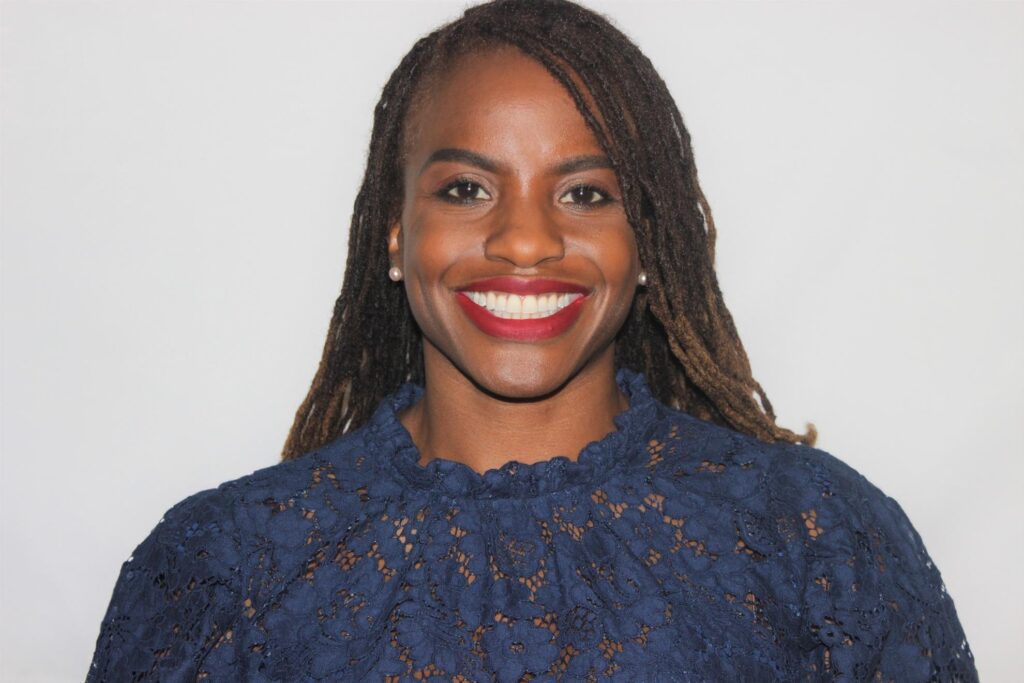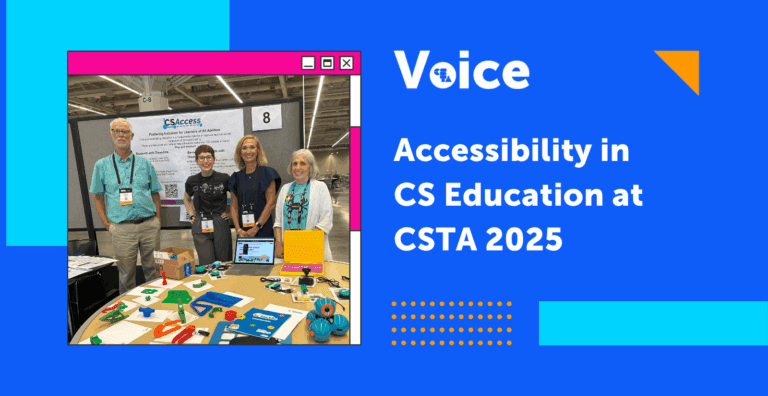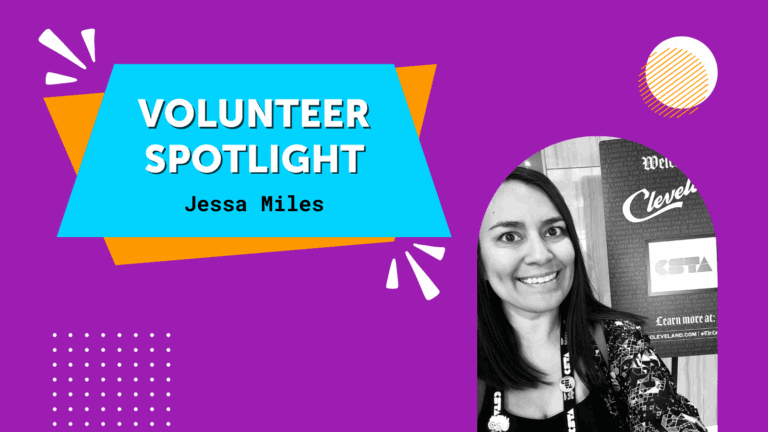
This month we feature Tamieka Grizzle, a teacher of over five years currently teaching at Mableton Elementary School in Douglasville, Georgia.
Full Story
During the fall 0f 2021, CSTA will be highlighting the winners of the 2021 Teaching Excellence Award, sponsored by the Infosys Foundation USA. These awards are designed to recognize outstanding teaching by K-12 CS teachers. Winners are highlighted for their work inspiring students to explore CS and broadening the participation of understanding underrepresented students in computing. Learn more about the award and all winners here.
This month we feature Tamieka Grizzle, a teacher of over five years currently teaching at Mableton Elementary School in Douglasville, Georgia. Follow her on Twitter here.
Tamieka, thanks for speaking with us today and for all your work to broaden CS in your elementary school and district. Thinking about your pathway to this award, what are your thoughts on getting more students of color to apply for CS in college and supporting their CS pathway after graduation?
CS teaching should be culturally responsive and appealing to students and teachers alike. We talk about the students, but support and focus should also be present for teachers of color. I want to see more Black characters in lesson plans, foods, and traditions that Black teachers can identify with. Teachers and students want to see themselves in all spheres of CS, of lessons, professional development, and communities. This encourages all teachers to want to teach and to increase marginalized and underrepresented populations. We need to create programs specifically for teachers of color and for students of color. The CSTA Conference is an excellent example of PD geared towards teachers of color and culture. What we need is more companies to be investing in culturally responsive PD. If you were a conference registrant, view available sessions and slide decks in the CSTA Virtual Community.
Part of the Teaching Excellence Award Application was to submit a teaching artifact and describe how it is an example of your practice and promotes equity in CS. Can you share a bit about your artifact?
My artifact highlights the integration of the K-2 Science Georgia Standards of Excellence with coding using the ScratchJr app to engage students in problem-solving and critical thinking skills. This represents my teaching practice because as a teacher in a high-poverty school, I initiated the STEM lab to make sure my lab was equitable, accessible, and supports the learning of all K-5 students no matter their academic aptitude or socioeconomic status. The focus of my lessons applies to the Georgia state science standards and the CSTA K-12 CS Standards as outlined in my PowerPoint (below), which includes: 1A-AP-10 Develop programs with sequences and simple loops, to express ideas or address a problem and 1A-AP-11 Decompose (break down) the steps needed to solve a problem into a precise sequence of instructions. It is evident in the videos that students have a wealth of knowledge coding with ScratchJr. Before creating their programs, students spent several classes learning about the ScratchJr interface and blocks (i.e., triggering, motion, looks, sound, control, end). Refinements I would include when teaching this lesson would be for students to explain their codes, tell the function of the blocks they used, and tell what they expect the characters to do when the green triggering flag block is tapped. View Tamieka’s teaching artifact here.
You talked about the income barriers for many of your student parents and the intersection of CS at the elementary school level from your Teaching Excellence application. Can you expand on that?
When we talk about marginalized populations, Black, Hispanic, etc., there are many resources available for students in certain grade bands, but few in elementary school. It’s extremely tough in title one schools to get students started/interested in CS when they are little. Many parents often cannot afford to send them to CS camps. As I mentioned in my Teaching Excellence application, one of my objectives was to create a STEM lab (at my last school) to increase access and awareness. I wanted to reach every single kid in computer science regardless of what their parents could afford.
How did you get involved in CS, and eventually at a point to help expand it within your school and district?
I’ve been doing everything to integrate computer science into the classroom to help get students engaged and planting seeds of awareness. As mentioned, it’s challenging to start in elementary school; many teachers of different disciplines believe that CS is difficult to learn and teach. To be transparent, I have a liberal arts education. We need to show teachers that CS is accessible, no matter what your background is. Through Code.org, I learned CS and became comfortable and curious about what I could implement with CS at my school. I was able to learn about robots and be an advocate for my students by writing grants to support our initiative. I was able to get free programs for my students of color to get involved in CS. It started with my ambition.
In your application, you mentioned getting your school involved in a Sphero Robotics program. How did you get involved with robotics?
Last year, our principal wanted to start an after-school program. I suggested that we create a robotics program that integrated CS and math skills, emphasizing joy and fun. I started to share my work on Twitter, with ITSE, and presenting on Scratch Jr.; My goal was to reach other teachers of color and make these connections Many folks underestimate my students, elementary school-aged kids, and students in general in Title One schools; there is an assumption that students are poor and cannot learn CS. My mindset is, I’ve always had high standards for my students with homework and understanding. I know my students can do the work and should have access to resources. I took my students to a Sphero competition worldwide, and none of the other teams looked like my kids. Learn more about Sphero and CSTA discounts on robotics here.
Would you like to share anything else with teachers?
I would tell other teachers of color to hold students of color to high standards and wait for that light bulb to go off. You can help them go places.




